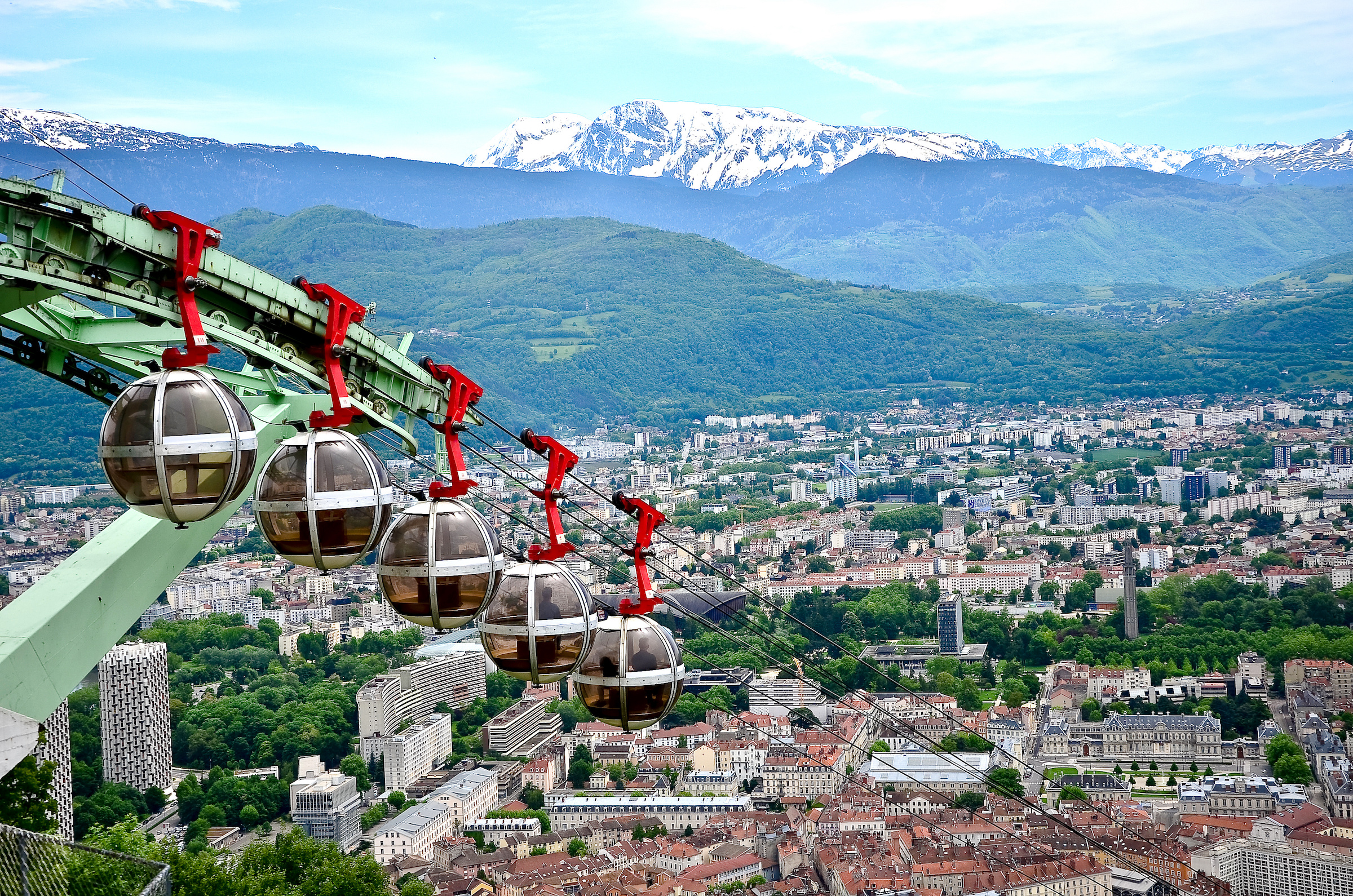Grenoble

Anyone who comes to Grenoble will visit the Bastille. And not only because the fortress, located 476 meters above sea level, is one of the most famous sights of the city, and not only because the ride there on the third oldest urban cable car in the world (after Rio de Janeiro du Cape Town) is an experience. And not only because the top station is a good starting point for hikes. But precisely because from the fortress located directly above the old town, you can see particularly well how the city with its approximately 160,000 inhabitants is shaped by its location in the high mountains.
The peaks of the Vercors, Chartreuse and Chaine de Belledonne massifs, some of which are more than 3,000 meters high, are all within a few kilometers of the city. There is hardly a point in the city where none of these alpine giants can be seen. Clearly, this has left its mark on the history of the city. Not all of them are pleasant: part of the city's history is that in 1968, because of its alpine location, it was the venue for the Winter Olympics, for which the La Villeneuve district was built in the Brutalist style. In terms of urban planning, the quarter is more than controversial today.
In any case, the old town, just below the fortress, has more tourist quality of stay. The town villas, the squares and parks, the small stores and the alleys breathe Grenoble's long history. The place was already inhabited in Celtic times, and a first city wall was built at the end of the 3rd century. The blackest day in the city's history was a flood that killed half of its inhabitants in September 1217. Important pioneers of the French Revolution came from Grenoble. Today Grenoble is an important location for high-tech research.
What must be seen besides the old town, the remains of the city walls and the fortress, which dates back to the 15th century? If you're in town at the right time, this includes the renowned Grenoble Jazz Festival in the spring. With the numerous museums, on the other hand, one is not dependent on the seasons. The museums deal with culture and history, albeit with very different emphases. First and foremost is the Musée de Grenoble, which houses one of the most remarkable collections of ancient and modern art in France.
There are also museums of archaeology and natural history, the Center for Contemporary Art and the Museum of Resistance and Deportation in the Isère region. There is a museum dedicated to the poet Stendhal, a museum of the mountain troops in the fortress, and the Musée dauphenois deals with the culture and history of the region. Finally, one should take a look at the Notre Dame Cathedral from the 13th century.